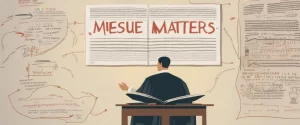
In the vast realm of literature, certain books have left an indelible mark on the minds and hearts of readers, resonating with their unique narratives and distinctive characterization. Amongst these literary gems, “Hopscotch” by Julio Cortázar and “The Catcher in the Rye” by J.D. Salinger stand as prominent works that have captivated audiences worldwide. While their stories unfold in different countries and explore distinct cultural landscapes, these novels share a common thread, woven through their protagonists’ existential crises and their unyielding quests for self-discovery. This comparative study aims to delve into the complex intricacies of both these iconic books, examining their parallel themes of alienation, rebellion, and the search for authenticity, while also contrasting their narrative techniques, settings, and renowned literary styles. By juxtaposing the tales of Horacio Oliveira and Holden Caulfield, we embark on a journey through two literary universes, unravelling the depths of their characters’ psyches and uncovering the lasting impact these novels have had within the realm of modern literature.
Brief Summary of Two Books
Hopscotch by Julio Cortázar
“Hopscotch” by Julio Cortázar is a groundbreaking novel that challenges traditional narrative structure. The story follows the lives of a group of intellectuals in Paris and Buenos Aires, focusing on the protagonist, Horacio Oliveira. The book is divided into two sections: a linear narrative and a non-linear one.
In the linear narrative, Oliveira navigates through his relationships, including his tumultuous affair with a woman named La Maga. Through these encounters, Cortázar explores themes of love, existentialism, and the search for authenticity in a fragmented world. Oliveira’s longing for a meaningful connection and his continuous introspection make him both relatable and enigmatic to readers.
The non-linear section, known as “Expendable Chapters,” presents an alternative reading experience. Cortázar encourages readers to create their own narrative sequence by choosing which chapters to read and in what order. This experimental format allows for multiple storylines and interpretations, reinforcing the idea that life itself is a game of chance and decision.
Throughout the book, Cortázar incorporates philosophical musings, literary references, and playful language, creating a rich and thought-provoking experience for the reader. Hopscotch” is a complex and innovative work that challenges traditional storytelling conventions, pushing the boundaries of literature and offering a unique and immersive reading experience.
The Catcher in the Rye by J.D. Salinger
“The Catcher in the Rye” by J.D. Salinger follows the story of a disillusioned sixteen-year-old named Holden Caulfield who has recently been expelled from his prestigious prep school. The novel is presented as Holden’s stream of consciousness as he recounts his experiences and struggles over three days in New York City.
Holden, who is deeply alienated and critical of society, presents himself as a troubled and snarky narrator. Throughout the novel, he discusses his disgust towards the adult world he sees as phony and superficial. He frequently speaks about his younger brother Allie, who passed away from leukemia and whom Holden deeply misses, and his younger sister Phoebe, with whom he shares a special bond.
Holden embarks on a series of encounters and adventures during his time in the city, all the while grappling with existential questions and his own emotional turmoil. He attempts to connect with various people, including an old teacher, a prostitute, and a childhood friend. However, Holden often sabotages these interactions and retreats further into his isolation.
The climax of the novel occurs at Phoebe’s school, where Holden’s frustration and anger towards the corruption and hypocrisy of society reach a breaking point. Witnessing Phoebe on a carousel, Holden experiences a profound realization of the importance of protecting innocence and preserving childhood.
In the end, Holden finds himself in a mental institution, reflecting on his journey and revealing that he is recounting this story from a therapeutic perspective. The underlying theme of “The Catcher in the Rye” revolves around Holden’s longing to protect the innocence of children, mirroring his own desire to escape the complexities and moral ambiguity of adulthood.
Comparison between Two Books

Similarities in self discovery
Parallel Hopscotch by Julio Cortázar and The Catcher in the Rye by J.D. Salinger are both literary works that explore the theme of self-discovery. Although they may differ in style and narrative structure, these novels share several similarities in their exploration of characters’ journeys towards self-realization. Here are some common threads:
1. Protagonists on the fringe: Both books feature protagonists who feel disconnected from society and struggle with feelings of alienation. Cortázar’s Horacio Oliveira and Salinger’s Holden Caulfield are characterized as outsiders who struggle to find their place in the world.
2. Quest for authenticity: Oliveira and Caulfield share a desire to find meaning and authenticity in their lives. They reject the superficiality and phoniness they perceive in the world around them and embark on personal journeys to discover their true selves.
3. Alienation from institutions: Both novels depict a sense of disillusionment with traditional institutions. Whether it’s Oliveira’s rejection of academia or Caulfield’s disdain for organized education and formalities, the protagonists reject societal constructs they perceive as oppressive or inauthentic.
4. Challenging societal norms: Oliveira and Caulfield question and challenge societal norms and expectations. They often resist conforming to societal conventions and express their discontent with the limitations placed upon them.
5. Reflection and introspection: Both protagonists engage in introspection, reflecting on their own thoughts and experiences. Through internal monologues and self-analysis, Oliveira and Caulfield search for answers to existential questions, trying to unravel their own complexities and motivations.
6. Identity crises: Oliveira and Caulfield both grapple with identity crises. They question who they truly are and struggle to determine their purpose and place in the world. This struggle often leads to introspection, self-doubt, and a search for a sense of identity.
7. Relationships as catalysts: In both novels, relationships play a significant role in the protagonists’ self-discovery. Oliveira and Caulfield interact with various individuals who challenge and influence their perspectives, forcing them to confront their own beliefs and values.
In conclusion, Parallel Hopscotch and The Catcher in the Rye share several similarities in their exploration of self-discovery. Both novels delve into themes of alienation, authenticity, identity, and the rejection of societal norms. Through the protagonists’ introspection and their interactions with others, the novels offer a profound exploration of the journey towards self-realization.
Divergences in self discovery
Hopscotch by Julio Cortázar and The Catcher in the Rye by J.D. Salinger are both remarkable works of literature that explore the theme of self-discovery in different ways. While they both delve into the protagonist’s search for meaning and identity, the approaches and ultimate outcomes of their journeys diverge significantly.
In Hopscotch, Cortázar presents a complex narrative structure that mirrors the protagonist Horacio Oliveira’s fragmented and non-linear thought process. Oliveira embarks on a philosophical quest, attempting to break free from societal conventions and find his true self. Throughout the novel, he engages in various intellectual discussions with his friends, delves into existential contemplations, and challenges conventional notions of reality. Oliveira’s search for self-discovery is deeply introspective, as he navigates a labyrinth of his own thoughts, memories, and desires. The ending of the novel, with its alternative narratives, allows the reader to choose their own path, suggesting that self-discovery is a personal and subjective journey that varies for each individual.
On the other hand, The Catcher in the Rye follows the journey of Holden Caulfield, a rebellious teenager who grapples with alienation, hypocrisy, and the loss of innocence. Unlike Oliveira, Caulfield’s search for self-discovery is largely external, as he tries to make sense of the world around him. He feels disconnected and disillusioned with the societal norms and expectations he sees as phony. Throughout the novel, Caulfield engages in encounters with various people, from nuns to prostitutes, in an attempt to find authenticity and genuine connection. However, his journey ultimately leads to emotional turmoil and a realization that he cannot save others from growing up. The ending of the novel suggests that Caulfield’s quest for self-discovery has brought him to a place of resignation and quiet reflection, rather than a clear sense of self.
The divergence in self-discovery between these books lies in the way the protagonists approach their journeys. Hopscotch emphasizes individualism and intellectual exploration, where self-discovery is sought internally through deep introspection and contemplation. In contrast, The Catcher in the Rye presents a protagonist who searches for self-understanding by questioning and challenging societal norms, seeking authenticity externally through interactions with others.
In conclusion, while both Hopscotch and The Catcher in the Rye explore the theme of self-discovery, they do so in distinct ways. Their protagonists, Oliveira and Caulfield, embark on contrasting journeys that diverge in the methods they employ and the ultimate outcomes they reach. Cortázar’s novel emphasizes internal introspection and intellectual exploration, while Salinger’s work presents an external quest for authenticity and connection.

Conclusion
Both Hopscotch by Julio Cortázar and The Catcher in the Rye by J.D. Salinger are highly regarded books that have made significant contributions to literature. The choice between which one is more worthy of reading ultimately depends on individual preferences and interests.
Hopscotch is a revolutionary novel that challenges traditional narrative structures and invites readers to engage actively in the construction of the story. Cortázar’s unique writing style and experimental format make it a captivating and thought-provoking read. It explores themes such as existentialism, identity, and the nature of reality, presenting a complex and multi-layered narrative that requires active participation from the reader. If you enjoy avant-garde literature and are open to challenging the conventions of storytelling, Hopscotch may be the more worthy book for you.
On the other hand, The Catcher in the Rye is a classic coming-of-age novel that has resonated with readers for decades. Narrated by the rebellious and disillusioned teenager Holden Caulfield, the book explores themes of alienation, identity, and the loss of innocence. Salinger’s vivid portrayal of teenage angst and the desire to preserve one’s authenticity in a world he perceives as phony has struck a chord with many readers over the years. If you have an interest in coming-of-age stories and want to delve into the mind of a complex and relatable character, The Catcher in the Rye might be the more worthy book for you.
Ultimately, both books offer unique and valuable contributions to literature. It would be worthwhile to read both, if possible, and explore the different perspectives and themes they present.

